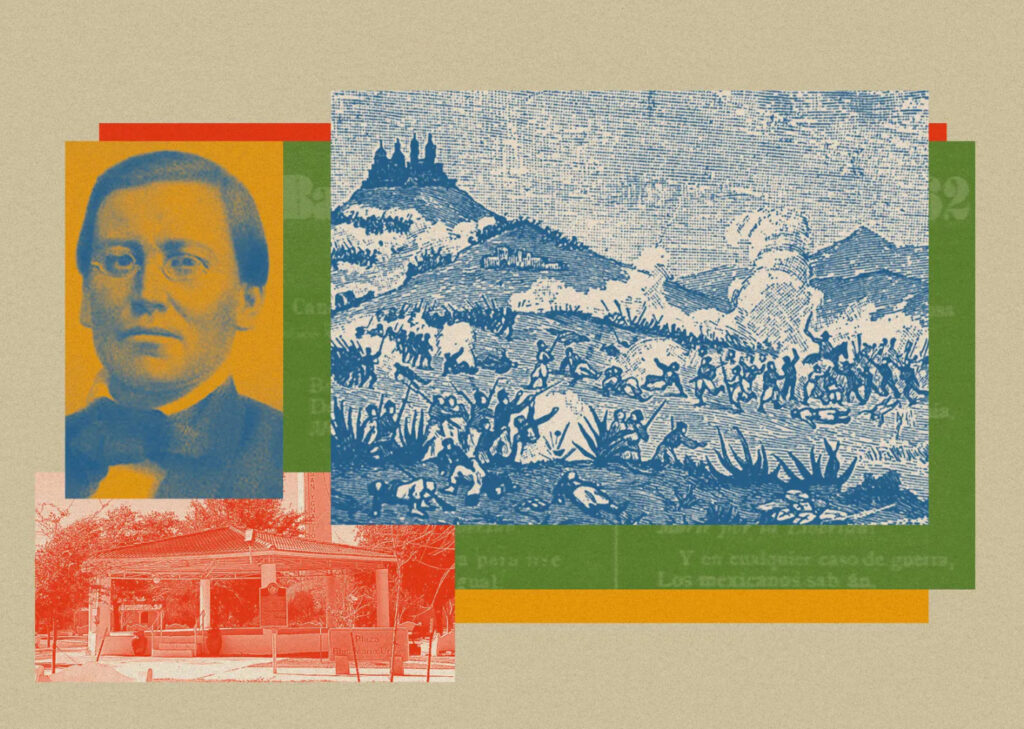In the mosaic of history, moments of resistance often become distorted by time, commercialism, and collective memory. Such is the case with Cinco de Mayo—a date more widely recognized today as a drinking holiday in the United States than a symbol of national defiance. Yet behind the margaritas and themed décor lies the story of a forgotten hero: General Ignacio Zaragoza, a Mexican patriot born in what is now Goliad, Texas. His improbable victory at the Battle of Puebla on May 5, 1862, against the superior French imperial army, echoes as a legend of grit, patriotism, and pan-American identity.
To fully appreciate Zaragoza’s role in this pivotal moment of Mexican history, one must first peel back the layers of misunderstanding that surround Cinco de Mayo. Contrary to popular belief, it is not Mexico’s Independence Day—that event occurred a full 52 years earlier, on September 16, 1810. Cinco de Mayo commemorates a specific military engagement during France’s attempt to establish a monarchy in Mexico under Emperor Napoleon III. The victory at Puebla was not strategic in the long run—the French would return a year later and occupy Mexico City—but it delivered a psychological and symbolic blow that galvanized national morale. Zaragoza’s triumph was not just a Mexican victory. It was a defiant, transnational act of resistance shaped by the currents of empire, colonial memory, and political upheaval.
From Texas Soil, A Mexican Patriot
Ignacio Zaragoza was born on March 24, 1829, in the Mexican province of Coahuila y Tejas, in the town of Bahía del Espíritu Santo—modern-day Goliad, Texas. At the time of his birth, the region was part of a Mexico still in its infancy, fresh from independence against Spain. Just six years later, Texas declared its own independence, eventually joining the United States. The Zaragoza family, fiercely loyal to Mexico, relocated south to Matamoros and then Monterrey.
This early displacement shaped Zaragoza’s worldview. He was a product of contested territory, a borderland soul shaped by the instability of the region. His Texan roots would later become a source of irony: an American-born son who would rise to prominence not as a soldier for the U.S. Army but as the commanding general of Mexican forces in one of the most inspiring moments of anti-imperial resistance in Latin American history. Zaragoza’s dual cultural identity—steeped in the geography of the Rio Grande—foretold the future blending of Mexican and American narratives that now define the borderlands.
The Road to Puebla
Zaragoza’s ascent within the Mexican military unfolded during a time of turbulence. Following the Mexican-American War (1846–1848), which resulted in Mexico ceding over half of its territory to the United States, the nation fell into a spiral of civil wars, foreign debts, and internal divisions. Zaragoza aligned himself with the liberal cause, supporting President Benito Juárez’s reforms that aimed to reduce the power of the Catholic Church and military oligarchy.
It was this allegiance that eventually positioned Zaragoza as Secretary of War under Juárez and later as commander of forces tasked with defending the nation against foreign intervention. France, Spain, and Britain had all sent warships to collect unpaid debts, but only France—under the pretense of repayment—harbored deeper ambitions. Napoleon III sought to install a European monarch in Mexico, believing it would provide a stronghold for French interests in the Americas. Juárez rejected the imperial overture, and France responded by sending 6,000 well-trained troops to invade.
Mexico’s military was vastly outnumbered and under-equipped. Zaragoza had no illusions of grandeur. In his letters, he wrote candidly of the bleak prospects. But he also believed in the land, in the people, and in the moral clarity of resistance. He rallied 4,500 soldiers—farmers, militia, and local irregulars—to the cause. The battle would take place in Puebla, a strategic city situated between Veracruz and the capital, Mexico City.
The Battle of Puebla
The French commander, Charles de Lorencez, was confident. He boasted in writing that he would be dining in Mexico City within a week. Instead, his forces encountered fierce resistance. Zaragoza’s troops, many armed with outdated weapons or none at all, entrenched themselves at the forts of Loreto and Guadalupe. What they lacked in firepower, they made up in determination.
The French launched repeated attacks on the fortified hilltops but were repelled by a combination of tactical brilliance and sheer resilience. Rain turned the battlefield to mud. The Mexicans used their knowledge of the terrain and guerrilla tactics to devastating effect. By the end of the day, nearly 500 French soldiers were dead or wounded, while Mexican casualties remained below 100. Lorencez ordered a retreat.
Zaragoza telegraphed to Juárez the immortal words: “Las armas nacionales se han cubierto de gloria.” The national arms have been covered in glory.
Though the French would later succeed in their campaign and install Maximilian I as emperor in 1864, his reign was short-lived. By 1867, Juárez was back in power and Maximilian executed. The Battle of Puebla, while not a war-ending moment, ignited a spirit of resistance that would endure beyond military timelines.
A Legacy Cut Short
Zaragoza would not live to see the full fruits of his triumph. Just months after the battle, he died of typhoid fever at the age of 33. His passing was mourned as a national tragedy. Juárez ordered that his remains be interred with honors and that a city be renamed Puebla de Zaragoza in his memory.
Today, Zaragoza occupies a complicated space in the Mexican national story—venerated, yes, but often overshadowed by longer-lived revolutionaries or independence heroes. His American birthplace sometimes makes his legend inconvenient for purists, even as it speaks to the fluid identity of the region. And in the U.S., Cinco de Mayo has been decontextualized to the point that Zaragoza’s name is rarely invoked.
But in truth, Zaragoza embodies a narrative that cuts across nations. He was a figure forged in the friction between empires—American, Spanish, French—and driven by an unshakable vision of a sovereign Mexico. His leadership during the Battle of Puebla remains a singular act of defiance that echoed into future movements of resistance across the Americas.
Cinco de Mayo in the United States
Ironically, it was in the United States—especially among Mexican-American communities—that Cinco de Mayo first became a celebrated date. In California, where news of the Battle of Puebla arrived just as the Civil War raged on, Mexican-Americans saw the victory as a metaphor for the Union struggle against slavery and secession. Zaragoza’s success was not merely a Mexican triumph, but a hemispheric affirmation that liberty could resist monarchy, and that self-determination could stand against foreign domination.
Over the years, Cinco de Mayo became a cultural touchstone among Chicano activists in the 1960s and 1970s, reclaimed as a symbol of pride and resistance. Later, commercial interests co-opted the celebration, turning it into an American marketing vehicle for beer companies and themed parties, far removed from its historical roots.
Yet beneath the surface of this appropriation lies an indelible truth: Cinco de Mayo is an American story as much as a Mexican one. Zaragoza, born in Texas, commanding troops in Puebla, and commemorated in California—connects a triad of geographies that shape the modern Mexican-American experience. His legacy resists simplification. It demands remembrance.
Conclusion: The Reclamation of a Hero
The story of Ignacio Zaragoza is not just the story of a military victory—it is a parable about the fight for sovereignty, the formation of national identity, and the overlooked contributions of borderland figures in continental history. Zaragoza, in many ways, anticipated the modern Mexican-American narrative: born between nations, defined by struggle, and transcending borders.
To reclaim Cinco de Mayo as more than a party is to reinsert Zaragoza into our collective consciousness—not just as a figure of Mexican patriotism, but as a hero of the Americas. His triumph at Puebla should be remembered as a moral victory over tyranny and a testament to the power of people over empire.
Cinco de Mayo is not about tequila. It’s about courage. It’s about the son of Texas who gave his life for Mexico. And it’s about the truth that sometimes, the most enduring revolutions are waged not by the best-armed, but by the best-led.
No comments yet.








